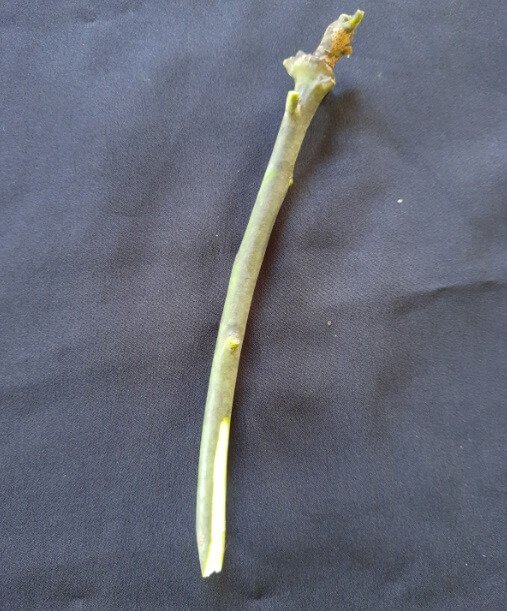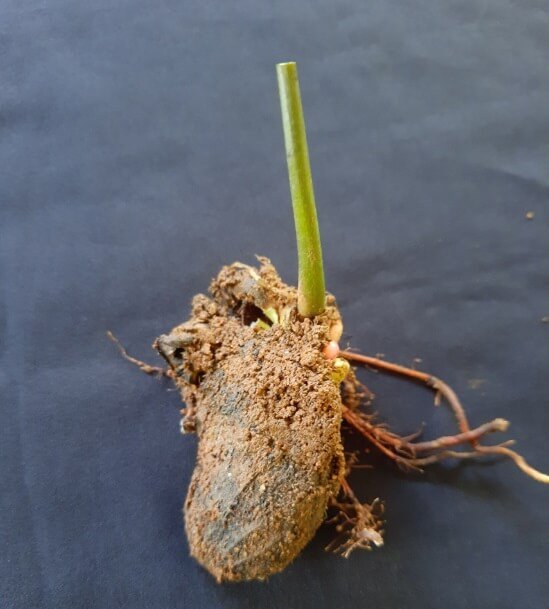Epicotyl grafting technique in mango, widely used for plant propagation
Grafting is a widely used horticultural technique for plant propagation. Mango is a cross-pollinated crop, and thus mango seedlings show variation in characters. Using grafting, it is possible to create plants that have the same characteristics as their mother plant. In the past, mango grafts were primarily produced using the approach grafting method. Epicotyl grafting has recently become more popular, which is a cheap, simple, and quick method for mango graft production.
Basic knowledge about grafting is required before practicing epicotyl grafting. Grafting is a technique used to unite parts from two or more plants so that they appear to develop as a single plant. The scion is the stem or another above-ground plant part from the chosen variety that is to be propagated.
It comprises a shoot with a few latent buds that will eventually give rise to a new stem and branches. The rootstock is the part of a plant that provides a root system for a grafted plant. Mango seedlings germinated from seeds can be used as rootstock for epicotyl grafting.
Agri News | Why Kerala farmers abandoning rubber in favour of rambutan, dragon fruit?
Portrays, covers or nursery beds can be used for sowing seeds for germination. Seeds should be sown within one month after harvest for maximum germination. Epicotyl grafting is done when the leaves of the seedlings are tender and coppery red in colour. Uproot the seedlings and dip them in 0.1 percent Bavistin or any suitable fungicide for 5 minutes.
Scions should be taken from a highly productive, healthy mother tree of the desired variety. A select scion from the tip of the branches is of pencil thickness and has an active, healthy terminal bud. Cut the scions at 10 -15 cm length from the tip with clean pruning scissors or secateurs or a very sharp knife. Removing the leaves from the scion will enhance the growth of the apical bud and prevent water loss through the leaves.
The next step is to prepare the rootstock for grafting. Cut off the top part of the uprooted seedling with a sharp knife at a height of about 6-8 cm from the base. A split should be made in the center of the stem to a depth of 4-5 cm. A wedge-shaped cut is made on the bottom portion of the rootstock. The scion should be inserted to the split/cleft made in the rootstock and tied with a polythene strip or grafting tape. Unlike other grafting methods, the rootstock is thinner than the scion in epicotyl grafting.

Agri News | Kerala Agri University launches interactive learning module ‘Catch ’em early’
This will prevent drying of the graft and provide ideal temperature and humidity for graft union. After that, the grafted plant should be placed in a poly house or a shady place and water regularly. Remove any sprouts on the rootstock which originate below the grafted area. The sip-up cover can be removed when the leaves start growing on the stem. Grafts become marketable in 3 to 4 months.
The success rate of epicotyl grafting is high compared to approach grafting. The cells in the young rootstock change quickly, which speeds up the graft union and makes it more likely to work. This method is most suitable for the commercial production of mango grafts.
Article by
Dr. Sheena. A. (Assistant Professor)
Instructional Farm, College of Agriculture, Vellayani
Thiruvananthapuram, Kerala.






















Add Comment